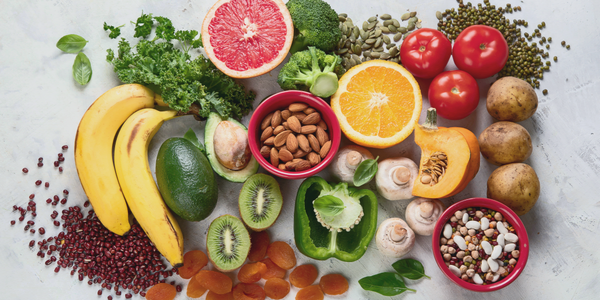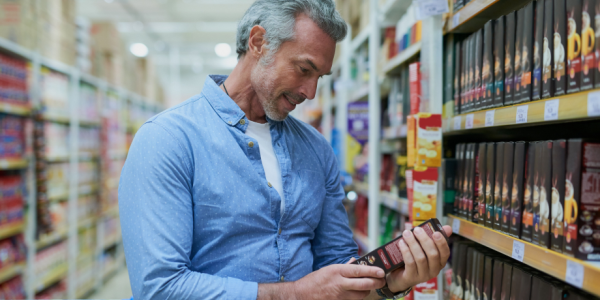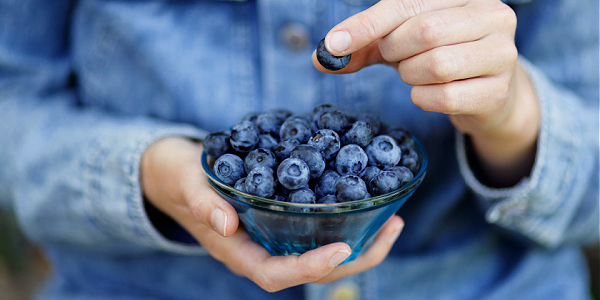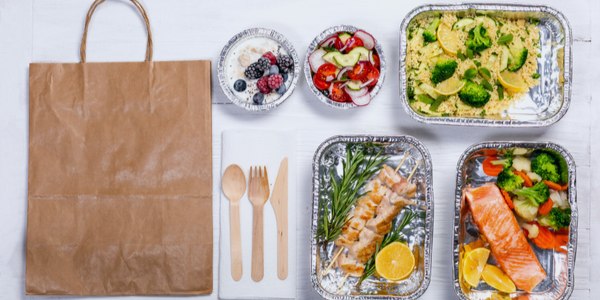
Potassium is one of the most well-known minerals, typically touted for its ability to prevent muscle cramps during exercise.
But is there any instance where a low potassium diet is warranted? Indeed, there are a few situations that necessitate consuming a low potassium diet.
Learn when to include rich sources of potassium in your diet and when to skip the bananas!
What Is Potassium Good For?
Potassium is an electrolyte and is also the third most popular mineral found in the body. As an electrolyte, it helps conduct electrical impulses throughout the body with the help of its partner sodium, via the sodium-potassium pump. In addition, it assists with various other bodily functions like:
• Maintaining blood pressure
• Water balance
• pH balance
• Heart rhythms
• Muscular contractions
• Nerve Impulses
• Digestion
Furthermore, about 98 percent of potassium is stored within cells, and of that, 80% resides within muscle cells. The other 20 percent lives in bones, liver, and red blood cells.
Of course, potassium functions to help with many autonomic bodily functions. But it is also linked to various impressive health benefits such as helping to reduce blood pressure and water retention and protect against strokes, osteoporosis, and kidney stones.
Potassium Sources
Overt potassium deficiency is quite rare and there is no recommended dietary allowance (RDA). However, the adequate intake is thought to be somewhere between 2,000 to 4,700 milligrams (mg) of potassium per day.
The body does not naturally produce potassium so it must be acquired from the diet. The best sources of potassium include fruits and vegetables, beans, nuts, whole grains, and lean proteins such as:
• Sweet potatoes and pumpkin
• Bananas
• Cantaloupe and honeydew
• Grapefruit
• Dried fruits
• Cooked spinach and broccoli
• Mushrooms
• Peas
• Leafy greens
• Tuna, trout, and halibut
• Kidney, lima, pinto beans, and lentils
• Nuts
• Brown and wild rice
• Whole wheat breads and pastas
• Meat and poultry
What Causes High or Low Potassium?
Just like potassium helps regulate the balance of various bodily functions (pH, water, blood pressure), it is equally important to balance levels of potassium. Thankfully, the body naturally accomplishes this when functioning properly, but certain conditions can disrupt this mechanism.
Low Potassium
Also called hypokalemia, potassium deficiency is rare in most cases except for a few instances including:
• Acute kidney injury
• Chronic kidney disease (CKD)
• Overuse of diuretics
• Excessive sweating, diarrhea, and vomiting (increased risk in bulimics)
• Magnesium Deficiency
• Overuse of antibiotics like penicillin
Of these conditions, chronic kidney disease is the most worrisome as it can cause long-term hypokalemia. Conversely, CKD can also cause hyperkalemia as you will soon learn.
In fact, the low potassium diet to be discussed soon is based on those with kidney disease and how well the kidneys can sufficiently filter potassium. Those with CKD also need to very closely monitor the mineral phosphorus.
Temporary reductions in potassium, like after a hard workout, likely will not cause symptoms or complications especially after eating a meal or drinking something with electrolytes. However, more severe deficiencies in potassium can lead to:
• Extreme fatigue
• Muscle spasms, weakness, or cramping
• Irregular heartbeat
• Constipation, nausea, or vomiting
High Potassium
Also called hyperkalemia, potassium overload is just as rare as a deficiency. Again, the body does an excellent job trying to equilibrate potassium because it is so vital. However, factors that increase the risk of too much potassium are:
• Overdosing potassium supplements
• Kidney diseases
• Diabetes complications
• Prolonged exercise (>90 minutes of intense exercise)
• Chronic cocaine use
• Chemotherapy
• Severe burns
Abnormal heart rhythms and beats (racing heart) is the most typical sign of hyperkalemia. It can be life-threatening, so seek immediate medical assistance if this happens.
Low Potassium Diet
A normal, healthy person should not need to follow a low potassium diet. In fact, diets insufficient in potassium are generally associated with poor health status. Rarely does someone need to follow a low potassium diet long-term, either.
However, those with acute kidney injuries (AKI) and chronic kidney disease (CKD) especially may need to monitor their potassium consumption. In general, those in the latter stages of renal disease need to be more stringent with their potassium intake. Those in the earlier stages, on the other hand, can typically be more liberal.
So why do those with CKD need to limit potassium?
The main job of the kidneys is to filter the blood and excrete excess fluids and toxins. When working normally, these bean-shaped organs can filter 120 to 150 quarts of blood each day. This not only prevents toxins from accumulating but also helps maintain a proper balance of the electrolytes sodium, potassium, and phosphate.
Because those with kidney disease have reduced kidney function, they are unable to regulate potassium balance. This is compounded by the fact that some medications used to treat kidney disease also raise potassium levels.
Recall that the body does not endogenously produce potassium. This means that potassium balance is achieved through dietary manipulation, namely, reducing high potassium foods and monitoring overall intake.
It is important not to completely avoid foods with potassium, as a certain level is still needed to function normally. This also means that it is important to control portions and serving sizes of low potassium foods because those can build up to essentially equal a high potassium load.
How Much Potassium?
Generally speaking, foods that contain less than 200 milligrams of potassium are considered low potassium foods. Those with kidney disease often need to limit potassium intake to less than 2000 mg per day.
In addition to the high potassium foods listed above, it is also important to be careful with:
• Avocados
• Raisins and other dried fruits
• Brussel sprouts
• Split peas
• Regular potatoes
• Milk and milk products
• Bran and bran products
• Beef
• Chicken
Conversely, include the following healthy low potassium foods liberally:
• Apples
• Berries
• Grapefruit
• Pineapple
• Cauliflower
• Eggplant
• Green beans
• White rice, pasta, and bread
• Egg whites
• Canned tuna in water
An additional way to monitor the amount of potassium includes avoiding canned fruits and vegetables and purchasing mostly fresh or frozen varieties. If canned goods are the only available option, then it is wise to drain and rinse them because potassium can leach into the juices and contribute even more potassium.
The National Kidney Foundation provides the following advice for leaching some high potassium vegetables like potatoes, carrots, beets, winter squash, and rutabagas. Although these foods still should not be consumed in large quantities, this mechanism may permit the consumption of these delicious veggies.
1. Peel the veggie and place in cold water.
2. Slice vegetable into ⅛ inch parts.
3. Rinse and warm water for a few seconds.
4. Soak veggie pieces for a minimum of two hours in warm water. Use 10 times the amount of water to the amount of veggie. Change the water every four hours if soaking longer than two hours.
5. Rinse veggie under warm water for a few seconds again.
6. Cook veggie with five times the amount of water to the amount of vegetable.
The Takeaway
Potassium is an abundant mineral and potent electrolyte that exerts many electrical functions within the body such as regulating heartbeat, helping muscles contract, and initiating nerve impulses. In terms of health, sufficient potassium status is associated with improved blood pressure, less water retention, and reduced risk for osteoporosis and kidney stones among others.
Although overt deficiency is rare, it is important for most people to include a variety of high potassium foods such as potatoes, bananas, and avocados to ensure adequate daily intake. This is because the body does not produce it on its own.
Nonetheless, those with kidney disease generally need to limit total potassium intake to less than 2000 mg per day. It is more important to remain under this level than completely eliminate all high potassium foods. Sticking to fresh produce is better than buying canned versions and leaching may permit a higher intake of high potassium foods.
Although following a low potassium diet takes some time to acclimate, it is pretty simple with some practice!
References:
Bonvissuto D. Foods for Low-Potassium Diet & High Potassium Foods to Avoid. WebMD. Medically Reviewed October 14, 2020. https://www.webmd.com/food-recipes/low-potassium-diet-foods.
Raman R. What Does Potassium Do for Your Body? A Detailed Review. Healthline. Written September 9, 2017. https://www.healthline.com/nutrition/what-does-potassium-do.
Whelan C. Kidney Disease and Potassium. Healthline. Written April 23, 2020. https://www.healthline.com/health/kidney-health/kidney-disease-and-potassium#outlook.







